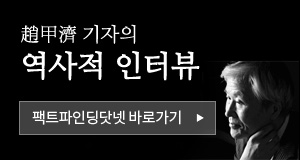













한국인 최초의 사제이자 조선시대 종교 박해 과정에서 순교한 가톨릭 성 김대건 안드레아 신부(1821-1846년)는 양반 출신이었다. 그는 1846년 9월16일 서울에서 25세의 꽃다운 나이에 참수 당했다. 충남 당진의 독실한 가톨릭 집안에서 태어난 성 김대건 안드레아 신부의 증조부와 부친도 목숨으로 신앙을 지키며 순교했다.
성 김대건 안드레아 신부는 1984년 5월6일 성 요한 바오로 2세 교황에 의해 시성된 103위 한국 순교자 가운데 한 명이다.
교황청 외부에서는 처음으로 한국에서 열렸던 시성식에서 성 요한 바오로 2세 교황은 “100년 안에 1만 명의 순교자가 나온 한국의 천주교는 전적으로 평신도에 의해 설립되었기 때문에 독특하다”고 말했다.
성 김대건 안드레아 신부는 1984년 5월6일 성 요한 바오로 2세 교황에 의해 시성된 103위 한국 순교자 가운데 한 명이다.
교황청 외부에서는 처음으로 한국에서 열렸던 시성식에서 성 요한 바오로 2세 교황은 “100년 안에 1만 명의 순교자가 나온 한국의 천주교는 전적으로 평신도에 의해 설립되었기 때문에 독특하다”고 말했다.
김대건은 1836년 마카오에 있는 신학교에서 신학·철학·지리·라틴어 등을 배우고, 1844년 만주에서 부제 서품을 받은 뒤 압록강을 건너 한양에 잠입해 교세 확장에 나섰다가, 선교사를 영입하기 위해 1845년 4월 신자 11명과 함께 ‘라파엘호’ 편으로 청나라 상하이로 건너갔다.
1845년 8월 상하이 금가항(金家港) 교회에서 한국인 최초의 사제가 된 후 8월31일 다시 라파엘호에 승선해 귀국길에 올랐는데, 풍랑에 표류한 배는 상하이를 떠난 지 28일 만인 9월 28일 제주도 한경면 용수리 해안에 표착했다.
전국을 순방하며 비밀리에 전도하던 김대건 안드레아 신부는 1846년 체포돼 25살의 나이로 한강변 새남터에서 목이 베어지는 군문 효수형으로 순교했다.
다른 문화와는 다르게 우리 민족은 선교사가 없고 사제가 없는 환경에서 자체적으로 글을 아는 양반계층이 먼저 성경을 읽고 하느님을 섬기며 크리스찬 신앙이 뿌리를 내렸고, 18~ 19세기에 1만 명 이상 순교자가 희생을 당했다. 남녀, 양반, 노비 모두 평등을 믿는 성경은 조선시대 당시 기득권에게는 용납될 수 없는 종교사상이였다.
한국인 최초의 사제 김대건 안드레아 신부가 상하이에서 귀국했던 제주에는 20세기 초에 미국으로 알려진 제주도 한라산에서 서식하는 구상나무가 있다.
독일에서 시작된 크리스마스를 미국에서 20세기에 세계적인 명절로 완성시키는데 절대 빠지지 않는 것이 바로 ‘크리스마스 트리’인데, 한국 제주도 한라산에서 서식하는 구상나무에서 나온 묘목이 미국과 유럽에서 크리스마스 트리로 상품화됐다.
영국 출신 식물학자 어네스트 헨리 윌슨(1876~1930)은 1872년 설립된 미국에서 가장 오래된 식물 연구기관인 하버드대의 아놀드 식물원(Arnold Arboretum of Harvard University)에서 세계적인 희귀식물들을 수록했는데, 1920년 아놀드 식물원 책에 한라산의 구상나무를 ‘Abies koreana, commonly known as Korean fir’라고 기록했다.
요즘 미국에서 ‘Abies koreana’나 ‘the Korean fir’를 검색하면 묘목을 살 수 있는 구상나무는 제주도에서는 한라산 해발 1,000미터 이상의 고원지대에서만 볼 수 있다.
Merry Christmas - from Jeju-do Island
Completing Christmas with the Korean fir tree from Hallasan (한라산)
Germans started it, but Americans perfected the celebration of Christmas in the 20th Century.
While no Christmas is complete without the Christmas tree, a native Korean fir called 구상나무 (Gusang namu) is the choice of Christmas tree in many homes in the U.S. and in Europe.
First encountered by Father Emile Joseph Taquet (1873~1952), a French missionary, in Mount Hallasan in Jeju Island in the early 1900s, famed botanist Ernest Henry Wilson (1876 – 1930), a British plant collector and explorer, documented his 1919 encounter with the Gusang Namu in Hallasan as Abies koreana, in the Journal of the Arnold Arboretum at Harvard University, the oldest public arboretum in North America.
Gusang namu (Abies koreana), the Korean fir, known for its unique blue cone, is abundantly found in elevations over 3,281 feet (1,000 meters) above sea level in Korea’s Jeju Island, where the weather at high elevations on Hallasan is unforgivingly harsh in winter.
The Korean fir, which is widely available in the U.S. and in Europe, makes an excellent pyramid-shaped garden tree, or 'potted living Christmas tree.'
Jeju Island was the first place in Korea where Korea's first Catholic priest landed, on Sept. 28, 1845.
Father Andrew Kim Taegon (1821-1846), Korea's first Catholic priest, was educated in Macau from age 15, and was ordained as a priest in Shanghai in 1844 by the French bishop Jean-Joseph-Jean-Baptiste Ferréol (1808-1853). Kim Taegon's great-grandfather and father had been martyred (executed) for practicing Christianity in Korea.
Long before European missionaries arrived, Koreans who had obtained the Bible translated into Hanja characters learned about Jesus, the Holy Spirit and God. When the first consecrated missionaries arrived in 1836, Koreans were already practicing Christianity.
The first Korean Christians were Yangbans, or nobles, the educated elite who had literacy with the Hanja bible imported from the Qing dynasty.
Mainstream Korean nobles owned slaves and did not believe in the equality of all men and women. Christianity challenged the status quo, and it was not compatible with their world view.
During the 18th and 19th centuries, Christianity was severely suppressed, and more than 10,000 Korean Christians were executed.
When Pope John Paul II addressed the first ever canonization ceremony outside of Rome, in Korea in the 1984 canonization of Saint Andrew Kim Taegon (성안드레아 김대건) and 102 martyrs, the Pope noted:
'The Korean Church is unique because it was founded entirely by lay people. This fledgling Church, so young and yet so strong in faith, withstood wave after wave of fierce persecution. Thus, in less than a century, it could boast of 10,000 martyrs.'
Just before Saint Andrew Kim Taegon was beheaded in Seoul on Sept. 16, 1846, at the tender age of 25, he said:
'This is my last hour of life, listen to me attentively: If I have held communication with foreigners, it has been for my religion and for my God. It is for Him that I die. My immortal life is on the point of beginning. Become Christians if you wish to be happy after death, because God has eternal chastisements in store for those who have refused to know Him.'
-30 -
Please visit https://www.kang.org/korea


















